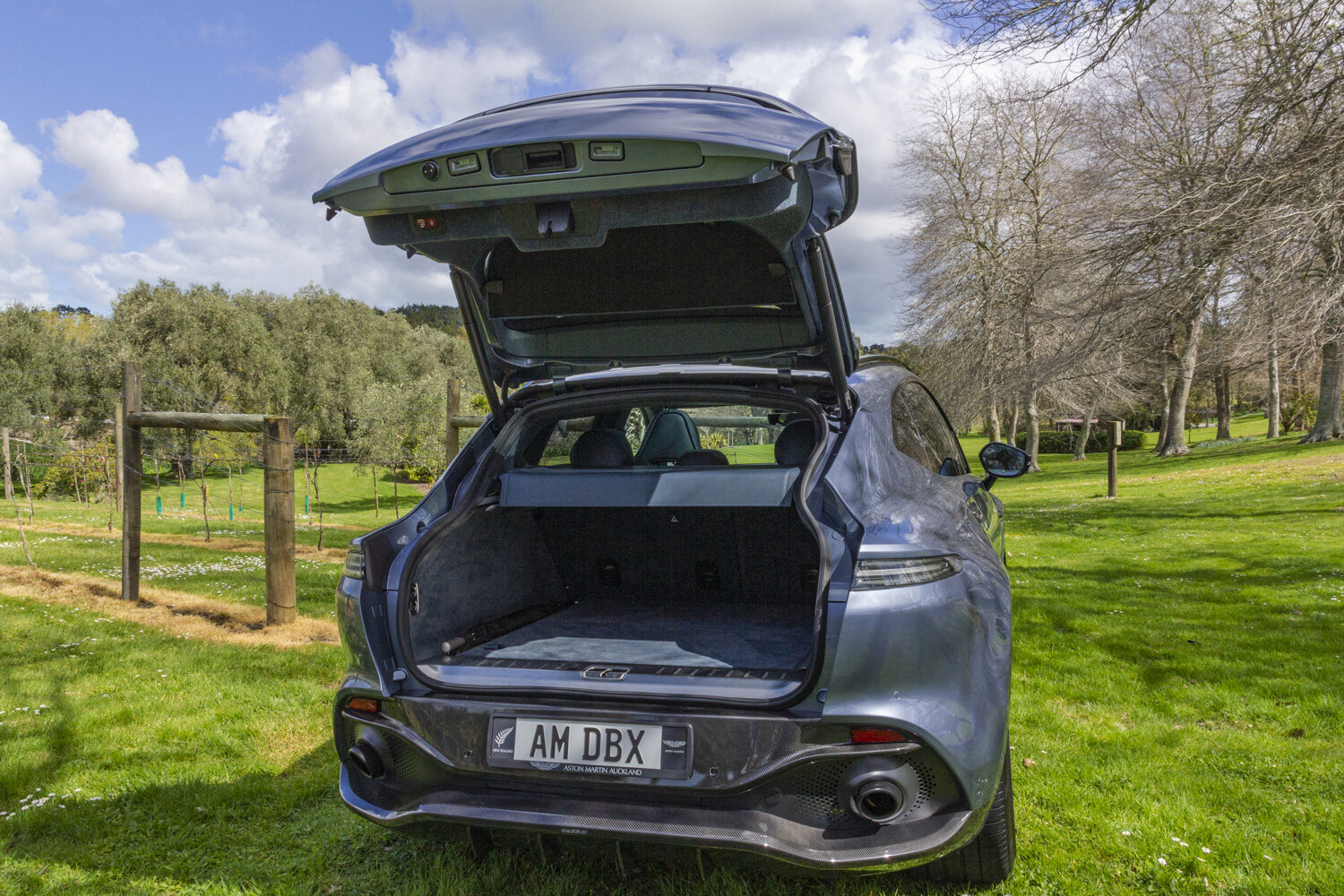First NZ drive: Aston Martin’s DBX luxury SUV
The Aston Martin DBX is the first SUV for the luxury British brand. Photos: Liz Dobson
There are an increasing number of luxury SUVs for sale in New Zealand, spearheaded by the popularity of Porsche’s Cayenne, and now Aston Martin has joined the line-up with its DBX.
Built at a specially created plant in St Athan, Wales, the DBX joins Lamborghini’s Urus and Bentley’s Bentayga as offering a super sport SUV to Kiwis.
As a former owner of an Aston Martin DB11, I was given the opportunity of testing the DBX yesterday in the only model currently in New Zealand.
Owned by Aston Martin UK, the blue DBX last week hosted the customers who bought the luxury medium SUV, and this week it's time for potential buyers to have a road test.
It is designed to have the wheels on each corner to make it sports car-like.
In November, the first of the customer ordered DBXs will arrive here, with the current 18 allotments from the factory all sold.
The DBX starts at $330,000 but Aston Martin New Zealand says most will be specced to $370,000, while our model was priced at $400,000 due to such extras as carbon fibre trim, and sound-proofing rear glass.
Aston Martin’s chief creative officer Marek Reichman designed the DBX so that the wheels sit at the very corners, making it look like a sports car, while it has the largest grille in the brand.
The DBX has a unique rear spoiler that is more like a lip.
So, what is the DBX like?
It feels the goods with its rich leather finishes and Aston Martin driver-oriented cockpit with the petite dash and intimate centre control stack.
The styling of the DBX doesn’t shout “drama” like the Urus, but therein lies its more conservative appeal.
The boot is large with the rear door finishing very low.
The DBX looks like an Aston at the front (far better integrated than a Bentayga) and has a beautiful swoopy side profile (the best of the luxury sports SUV), with an unusual back that sometimes reminds me of a Renault.
The 4-litre turbocharged V8 petrol engine, throwing out 405kW of power and 700Nm of torque, hits 0-100km/h in a perfectly respectable 4.9 seconds. Yes, it could be Urus-like faster but do we need another 3.6 second SUV? Maybe!
It has a nine-speed autobox, triple-chamber air-ride, a suite of electronically-controlled differentials and electric ride control. The DBX has six drive modes (GT, Sport, Sport+, Individual, Terrain and Terrain+).
There are frameless doors give it a sports appeal and the use of leather is classic.
The DBX sits on an all-new aluminium platform and also has double wishbone front suspension combined with a multi-link rear axle, as well as electronic adaptive damping for every wheel.
The DBX weighs 2245kg, and is 5039mm long (the Bentayga is 5141mm, Urus 5113mm), 1998 mm wide (same as the Bentley while the Urus is 2017 mm) and 1680 mm high (the Bentayga is1740mm, Urus 1638 mm).
Around town, I had it in GT mode, then dialled in sport mode for the challenging Old North Road from Riverhead to Waimauku.
It has a small multimedia screen and the usual Aston Martin gear buttons on the dash.
I loved the linear power delivery, especially in sport mode where it also emits a strong howl. It’s sure-footed to drive and really puts a smile on my face. I liked the firm feeling in steering in sport mode too.
The DBX is the perfect combination of sports and luxury making it the consummate grand tourer. It fits five people, and I liked the front sports seats that are heated and ventilated, though still no massage functions, something I like in my Bentley Continental GT and Mercedes-AMG G63.
The Aston Martin look may be a little plain for some but in the right colour combination (something bright and there are lots of great options) and six alloy designs for 22-inch wheels. I’d have my DBX in red with a tan full leather trim.
There is enough room in the rear for three adults thanks to plenty of head room.
Compared to the Cayenne, Urus and Bentayga, it's a tight race but the DBX is up there at the top for uniqueness.
It falls short on tech-savviness, especially the multimedia aspects, and I think it should have adopted more functions from supplier AMG. But, I was pleased that the DBX had adaptive cruise control, something my DB11 lacked.
Other than that I rate it highly. Aston’s future depends on DBX as global demand for SUVs increases, and I wish them great success.
Our DBX has the addition of carbon fibre accents.








